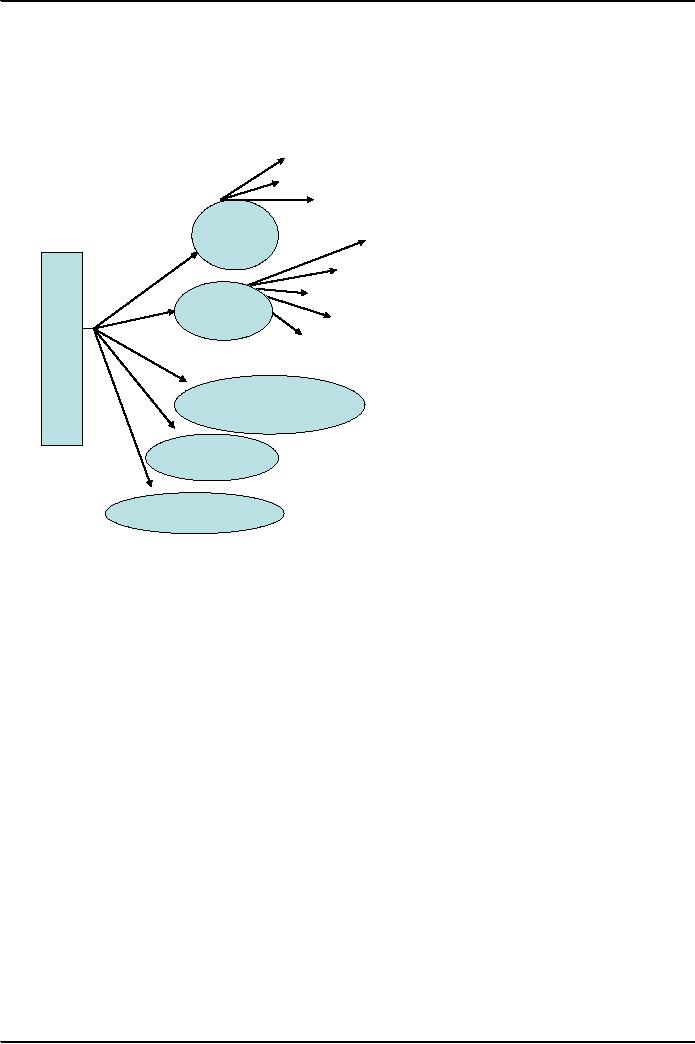 |
Measurement and Review of the Entity’s Financial Performance |
| << Risk Assessment Procedures & Sources of Information |
| Definition & Components of Internal Control >> |

Fundamentals
of Auditing ACC 311
VU
Lesson
14
UNDERSTANDING
THE ENTITY AND ITS ENVIRONMENT
AND
ASSESSING THE RISKS OF MATERIAL
MISSTATEMENT
Inquiries
Analytical
procedures
Observation &
Inspection
Risk
assessment
External
Factors
procedures
How
Nature of
entity
to
Objectives
and strategies and the
related business
risks
Understanding
obta
Measurement &
review of financial performance
consists
of:
in
Internal
Control
und
erst
andi
Assessing
the risk of material
misstatement
ng
Communication
Documentation
d)
Measurement
and Review of the Entity's
Financial Performance
The
auditor should obtain an understanding of the
measurement and review of the entity's
financial
performance.
Performance measures, internal
and external, some times
create pressures on the
entity
and motivate management to
misstate the financial
statements.
Internally
generated information may
highlight entity's position vis-�-vis,
its competitors and
reports
from credit rating agencies
and analysts may provide
information useful to the auditors
understanding
of the entity and its
environments.
Examples
of matters an auditor may
consider include the following:
� Key
ratios and operating
statistics
� Key
performance indicators
� Employee
performance measures and incentive
compensation policies.
� Trends
� Use
of forecasts, budgets and
variance analysis
� Analyst
reports and credit rating reports
� Competitor
analysis
� Period
on-period financial performance
(revenue growth, profitability
leverage)
e)
Internal
Control
Understanding of
Internal Control is used by the
auditor to identify types of
potential
misstatements
and to consider factors that
affect the risks of material
misstatements and design
the
nature,
timing and extent of further
audit procedures.
50

Fundamentals
of Auditing ACC 311
VU
Definition
of internal control
Internal
controls is the process designed and
effected by those charged
with governance,
management,
and other personnel to
provide reasonable assurance about the
achievement of the
entity's
objectives with regard to
reliability of financial reporting,
effectiveness and efficiency of
operations
and compliance with
applicable laws and
regulations. It follows that
internal control is
designed
and implemented to address identified
business risks that threaten the
achievement of any
of
these objectives.
Components of
internal control
(a)
The
control environment
(b)
The
entity's risk assessment process
(c)
The
information system, including the
related business processes relevant to
financial
reporting
and communication.
(d)
Control
activities
(e)
Monitoring
of controls
51
Table of Contents:
- AN INTRODUCTION
- AUDITORS’ REPORT
- Advantages and Disadvantages of Auditing
- OBJECTIVE AND GENERAL PRINCIPLES GOVERNING AN AUDIT OF FINANCIAL STATEMENTS
- What is Reasonable Assurance
- LEGAL CONSIDERATION REGARDING AUDITING
- Appointment, Duties, Rights and Liabilities of Auditor
- LIABILITIES OF AN AUDITOR
- BOOKS OF ACCOUNT & FINANCIAL STATEMENTS
- Contents of Balance Sheet
- ENTITY AND ITS ENVIRONMENT AND ASSESSING THE RISKS OF MATERIAL MISSTATEMENT
- Business Operations
- Risk Assessment Procedures & Sources of Information
- Measurement and Review of the Entity’s Financial Performance
- Definition & Components of Internal Control
- Auditing ASSIGNMENT
- Benefits of Internal Control to the entity
- Flow Charts and Internal Control Questionnaires
- Construction of an ICQ
- Audit evidence through Audit Procedures
- SUBSTANTIVE PROCEDURES
- Concept of Audit Evidence
- SUFFICIENT APPROPRIATE AUDIT EVIDENCE AND TESTING THE SALES SYSTEM
- Control Procedures over Sales and Debtors
- Control Procedures over Purchases and Payables
- TESTING THE PURCHASES SYSTEM
- TESTING THE PAYROLL SYSTEM
- TESTING THE CASH SYSTEM
- Controls over Banking of Receipts
- Control Procedures over Inventory
- TESTING THE NON-CURRENT ASSETS
- VERIFICATION APPROACH OF AUDIT
- VERIFICATION OF ASSETS
- LETTER OF REPRESENTATION VERIFICATION OF LIABILITIES
- VERIFICATION OF EQUITY
- VERIFICATION OF BANK BALANCES
- VERIFICATION OF STOCK-IN-TRADE AND STORE & SPARES
- AUDIT SAMPLING
- STATISTICAL SAMPLING
- CONSIDERING THE WORK OF INTERNAL AUDITING
- AUDIT PLANNING
- PLANNING AN AUDIT OF FINANCIAL STATEMENTS
- Audits of Small Entities
- AUDITOR’S REPORT ON A COMPLETE SET OF GENERAL PURPOSE FINANCIALSTATEMENTS
- MODIFIED AUDITOR’S REPORT